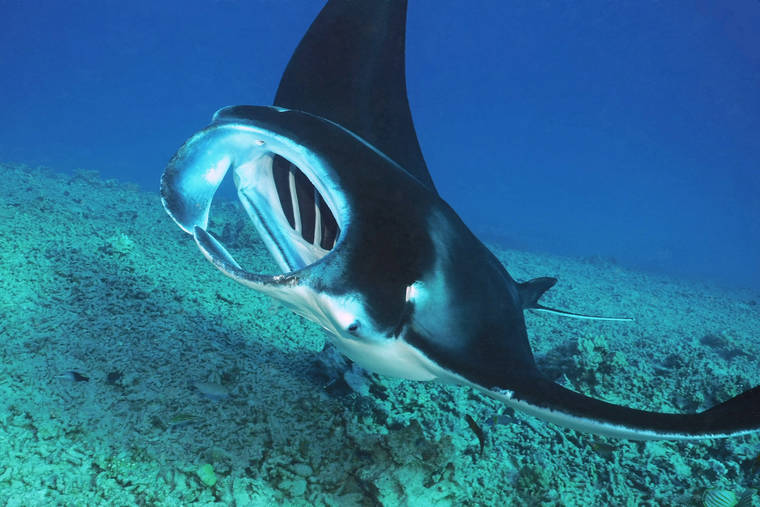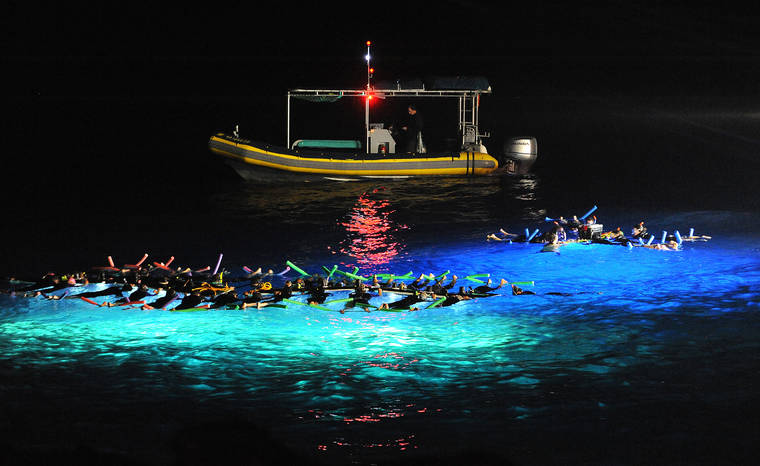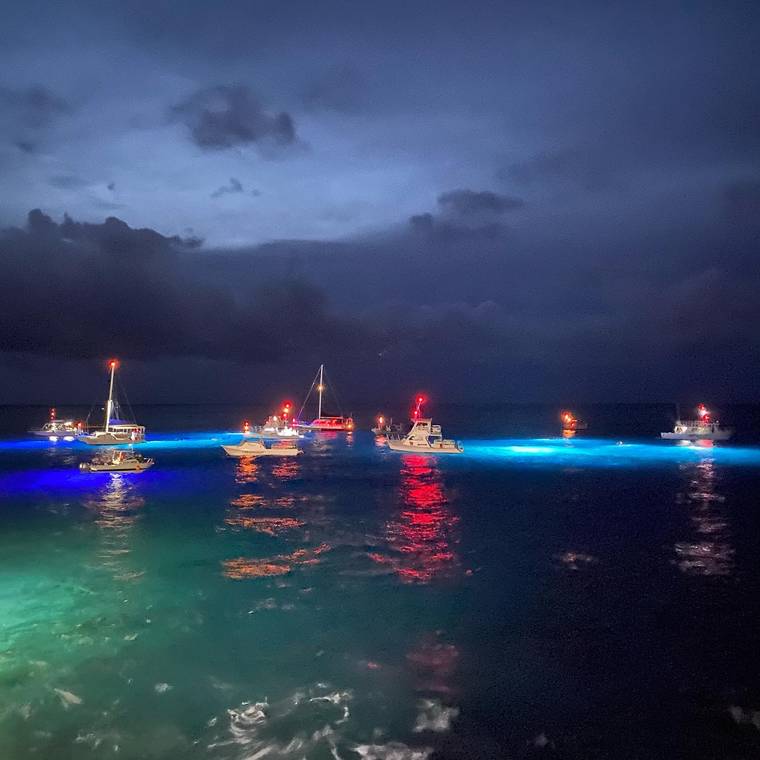Public comment is being sought by the state on plans to install day-use mooring buoys at two popular manta ray viewing sites off the Kona Coast.
The Department of Land and Natural Resources Division of Boating and Ocean Recreation is looking to install 13 day-use mooring buoys (DMBs) at Kaukalaelae Point, off Keauhou, and 12 day-use moorings at Makako Bay, off Keahole Point. The work will involve removing and reconfiguring existing moorings at the sites, which were not permitted nor are managed or maintained by the state.
The new configuration will accommodate more boats utilizing the sites for manta ray viewing tours, as well as protect natural resources by ridding the use of chains and anchors that can damage coral reefs, according to the department. It is part of the effort to manage manta diving at the two sites with rule making that began in 2014 and has yet to be finalized.
“This is for our pending rule making for trying to address the manta diving that takes place at two sites,” Ed Underwood, Division of Boating and Ocean Recreation administrator, told the Board of Land and Natural Resources on May 28 before a draft environmental assessment was submitted to the Office of Environmental Quality Control.
That draft environmental assessment, which anticipates a finding of no significant impact for the project, was published Wednesday kicking off a 30-day public comment period. Input is due by July 23.
Funding for the project will come from DLNR, and the program will be implemented in two phases due to state finances being impacted by the COVID-19 pandemic.
“Due to budgetary constraints, the program would install five priority moorings at Kaukalaelae Point where studies have consistently documented the highest levels of crowding,” the draft EA reads.
The addition of five moorings, will increase the Keauhou site’s moorings to nine.
“While nine moorings will not accommodate the average number of companies documented to offer tours prior to 2020, nine moorings will provide significant coral protection value to this high use site,” the draft EA reads.
Further, because of the impacts of COVID-19 on finances, the department said it cannot commit to the installation and maintenance of up to 13 day-use mooring buoys at each of the two popular manta viewing sites.
“The details of Phase 2 are provided here for the purposes of providing the long-term cumulative impact perspective that is critical to an Environmental Assessment, but the project intends to install only five moorings at this time. Should budgetary circumstances become more favorable for additional mooring installations at the manta ray viewing sites, the Division will install up to 13 moorings at either site according to the specifications outlined in this document,” the draft EA reads.
The effort to address issues related to manta ray viewing off the Kona Coast began in 2014 when the state House of Representatives passed a resolution urging the DLNR to manage the dive sites, specifically to address overcrowding, safety and liability issues.
Following consultation with stakeholders and public meetings in 2016 and 2017, draft Hawaii Administrative Rules were developed. Those rules are expected to be finalized this summer.
A 2015 study by Marine Science Consulting LLC found that the manta tours host up to 300 divers and snorkelers nightly with an estimated 60 operators competing for space and access at the two sites.
A 2012 estimate of manta ray watching tourism’s direct economic impact was approximately $4.7 million at three sites in Hawaii, with $3.4 million of that from the Kona sites alone. The department, using Hawaii Tourism Authority reported annual spending by visitors to Hawaii Island since 2012 and adjusting for annual inflation, estimated the economic value of Kona manta tourism in 2017 at $6.2 million.
The DLNR did not respond to a request for comment regarding the not-yet-finalized rules for the viewing sites and the estimated cost to install and maintain the day-use mooring buoys.
Comments are due by July 23 to the proposing/determining agency and with a copy sent to the consultant. To find the draft EA for the “Installation of Day-Use Mooring Buoys at the Manta Ray Viewing Sites, Kaukalaelae Point and Makako Bay,” check out the latest edition of The Environmental Notice put out by the Office of Environmental Quality Control at https://oeqc2.doh.hawaii.gov/The_Environmental_Notice/2021-06-23-TEN.pdf.








